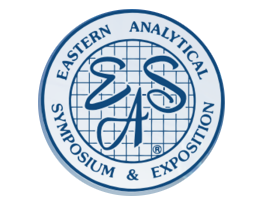One-Day Course
Date to be announced; 8:30am – 5:00pm
Dr. Donald Dahlberg, Lebanon Valley College (Emeritus), Annville, PA
Dr. Neal Gallagher, Eigenvector Research, Wenatchee, WA
COURSE DESCRIPTION
This intermediate course concentrates on two areas of chemometrics: (1) Mixture Analysis and (2)
Multivariate Image Analysis. Multivariate Curve Resolution (MCR) is a powerful chemometric technique
that allow the user to determine the composition profile and the pure component spectra of mixtures. These techniques can be applied to resolving overlapping peaks in hyphenated chromatography and determining the time or spatial distribution of substances in reactions and heterogeneous mixtures. MCR can be used with time-series data or multivariate/hyperspectral images. Multivariate Image Analysis is the application of chemometric tools to multispectral images used in quality assurance, agriculture, biomedical imaging, surveillance, standoff detection, pharmaceuticals, cultural heritage, forensics and an ever growing number of fields. The course will have hands-on exercises, so that the participants can follow along with the instructor on their own computers.
This course can be combined with Introduction to Chemometrics without Equations (Part 1) as a two-day course. A discount will be offered over separately registering for the two one-day courses.
WHO SHOULD ATTEND
This course is directed toward those who have some experience with the basic tools of chemometrics such as Principal Component Analysis (PCA) and Partial Least Squares (PLS) and want to apply these and other techniques to mixture analysis and/or multispectral images. This course should be of interest to those involved in chromatography and hyperspectral imaging, following changes over time or location, and the analysis of materials in complicated matrices. As with the predecessor course, Chemometrics without Equations, it presents the material without the use of high-level mathematics found in many software manuals and texts. Course emphasis is on proper application and interpretation of chemometric methods as applied to real-life problems. The objective is to teach in the
simplest way possible so that participants will be better chemometrics practitioners and managers.
TOPICS
1. Multivariate Mixture Analysis
a. The probability of overlapping peaks in chromatography
b. Determining the number of components in a mixture
c. Multivariate curve resolution (MCR) and alternating least squares (ALS)
d. Examples of time and spatial dependent systems
3. Multivariate Image Analysis (MIA)
a. Intro to 3-way arrays and simple visualizations and size/shape analyses
b. Practical MIA examples applying PCA, SIMCA, PLSDA and clustering to multivariate images
c. Variance Filtering for Images: Maximum autocorrelation factors, maximum difference factors,
generalized least squares weighting (MAF, MDF, GLSW)
ABOUT THE INSTRUCTORS
Dr. Donald Dahlberg (Course Director) is Professor Emeritus of Chemistry at Lebanon Valley College. Dr. Dahlberg earned a B.S. in Chemistry from the University of Washington and a Ph.D. in Physical Chemistry from Cornell University. After decades of doing research in the area of Physical Organic Chemistry, he got involved in Chemometrics while on sabbatical in 1988 at the Center for Process Analytical Chemistry at Washington. There he learned chemometrics in the Bruce Kowalski group (co-founder of chemometrics). Upon returning to LVC, he taught chemometrics to undergraduate students for over a decade. Although retired from the classroom, he continues to do consulting and supervises undergraduate research in industrial chemistry. Dr. Dahlberg wrote and teaches this course so that those not fluent in matrix algebra can take advantage of the powerful tool of chemometrics.
Dr. Neal B. Gallagher, PLS_Toolbox co-author and co‐founder of Eigenvector Research, Inc., holds a doctorate in Chemical Engineering and has experience in a wide variety of applications spanning chemical process monitoring, hyperspectral image analysis, anomaly detection, quantification and classification, regression modeling and analytical instrumental development. He has extensive teaching experience including Eigenvector University and dozens of chemometric courses.

